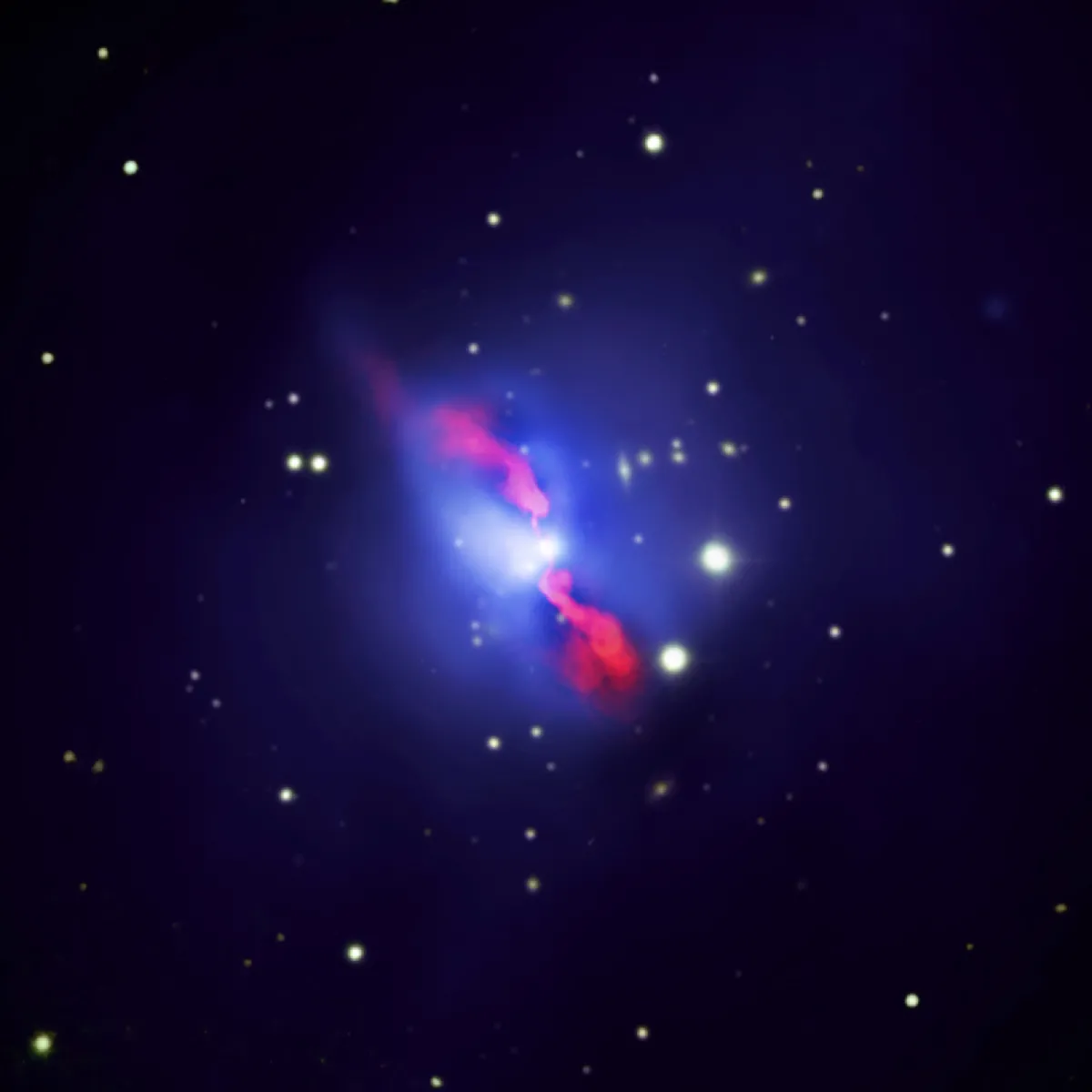The link between extended line emission and AGN feedback in brightest cluster galaxies
This research project employed the Wide-Field Spectrograph (WiFeS) to study the extended filaments surrounding a sample of brightest cluster galaxies (BCGs) in massive clusters. Integral-field spectroscopy provides the opportunity to measure the distribution, emission properties, and velocities of the emitting gas across the extent of the galaxies.
Research themes
Project status
Content navigation
About

Massive elliptical galaxies have formed in the cores of most large clusters of galaxies, close to the gravitational centre of the cluster. These galaxies, known as cD, central cluster, or brightest cluster galaxies (BCGs), are often surrounded by extended nebulae, or clouds of gas that have long, thin, filamentary structures and emit light over a wide range of energies and with a peculiar emission spectrum.
The origins of these filaments and the material within them, and how the gas is excited to produce the observed emission are not yet well understood. It is quite likely, however, that they are associated with the complex cycles of cooling and reheating that occur in these galaxies. The elliptical galaxies are all host to central supermassive black holes that are being fed by cooling material falling inward to the galaxy and cluster centre and, as a result, produce radio jets that transport material and energy from the vicinity of the active galactic nucleus throughout the galaxy and its surroundings. These processes are important to understanding the mechanisms of energy feedback that are thought to play a central role in the formation and growth of galaxies.
This research project employed the Wide-Field Spectrograph (WiFeS) to study the extended filaments surrounding a sample of brightest cluster galaxies (BCGs) in massive clusters. Integral-field spectroscopy provides the opportunity to measure the distribution, emission properties, and velocities of the emitting gas across the extent of the galaxies. We used these observational results in conjunction with theoretical shock models to test the predictions of current models for how the extended nebulae are powered.
We found evidence that shock excitation likely plays an important role in exciting the filament gas, in addition to photoionisation by young stars that are forming in the most luminous BCGs.
